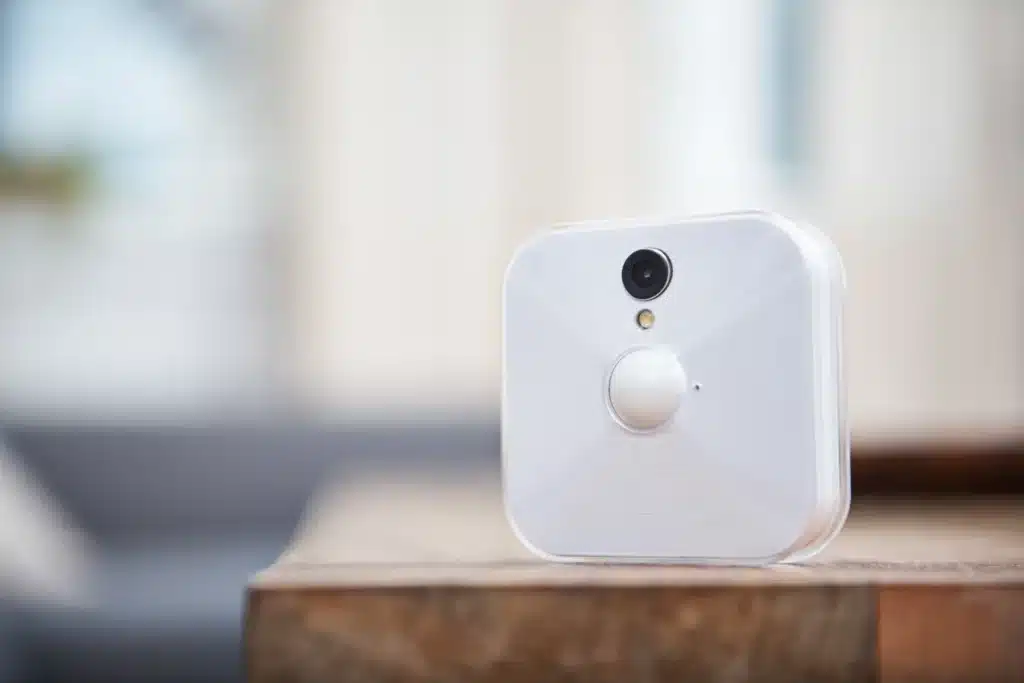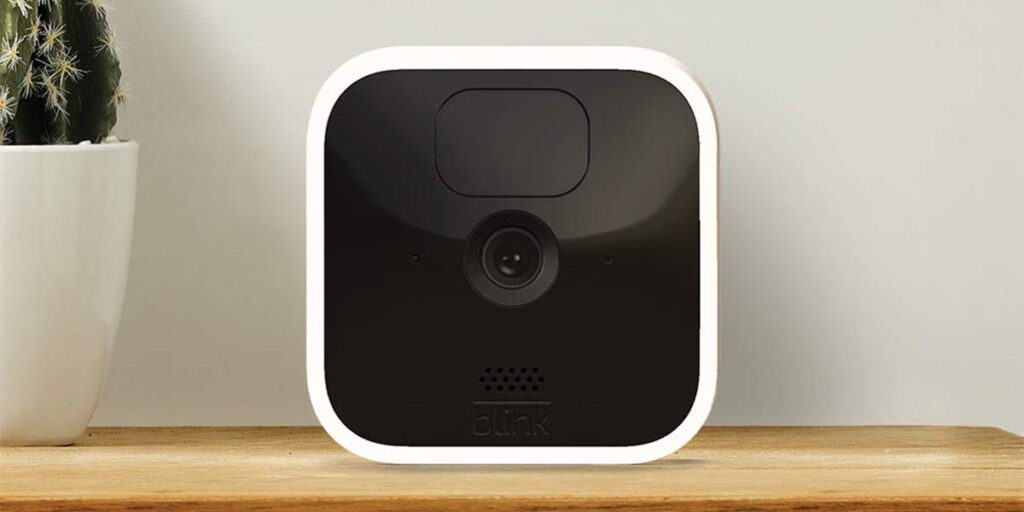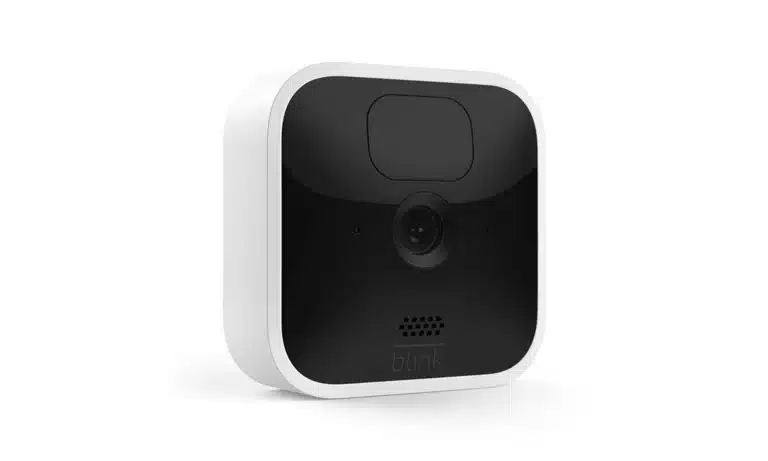Introduction
Does The Blink Camera Record: In this day of modern technology and personal security concerns, surveillance cameras are omnipresent in protecting homes, companies, and public spaces. The Blink Camera is popular for its compact size, ease of use, and supposedly advanced features. This extensive review explains the Blink Camera’s functions.
As an AI-driven security camera, it is essential to understand the intricacies of its recording mechanism, data storage, and overall privacy considerations. In the following pages, we will delve into the fundamental workings of the Blink Camera, exploring its recording capabilities, motion detection sensitivity, and real-time monitoring abilities. Additionally, this study aims to address concerns regarding privacy and data protection associated with surveillance cameras.
The Blink Camera operates in a residential and potentially public setting, so user privacy and surveillance technology laws must be assessed. We want to educate readers so they can make confident security decisions. We educate customers about the Blink Camera’s features so they can enjoy current surveillance technologies without compromising their privacy and security.

Do Blink cameras keep recordings?
Your clips stay viewable in the Blink app until they are manually deleted, or the clip reaches its auto-deletion time (60 days US or 30 days in the EU/UK). With a Blink Subscription plan, you also have unlimited cloud video recording.
Yes, Blink cameras record. Motion detection or Blink app activation triggers Blink cameras to record video. The camera automatically records a small video clip when it detects motion. The user’s subscription package and preference determine whether these recordings are stored in the Blink cloud or locally.
Cloud storage from Blink is free with the Basic Plan and charged with the Subscription Plan. Blink cameras may keep motion-triggered video recordings in the cloud for two hours with the Basic Plan. However, the Subscription Plan allows customers to save and view their video clips for up to 60 days, depending on the plan.
Local storage options include placing a microSD card into the camera. This option lets users store recordings on the camera without cloud storage. Blink cameras allow users to evaluate past occurrences, monitor activities, and improve security by recording.
Can Blink cameras record at night?
Blink cameras have an 850nm infrared (IR) LED light to show you clear video in areas of complete darkness. If Night Vision is enabled, your camera will be able to view and record in a low light or non-lit environment.
Yes, Blink cameras record at night. Blink cameras use infrared (IR) night vision to record clear video in low-light or complete darkness. When the camera detects low light, it immediately converts to night vision mode, using infrared LEDs to illuminate without disturbing the environment.
By detecting heat signatures of objects and people, infrared night vision allows the camera to “see” in the dark and capture black-and-white video. This system lets consumers watch their indoor and outdoor property 24/7, regardless of lighting.
Blink cameras provide 24/7 protection and peace of mind with their night vision. Blink cameras record clear, detailed video nightly for intruder detection and pet and family surveillance.
Do Blink cameras record without WiFi?
The answer is yes, but with limited functionality. Blink cameras are designed to work with a WiFi connection, which allows them to send alerts and video footage to your smartphone or tablet. Without WiFi, the cameras can still record video footage, but you won’t be able to access it remotely.
Blink cameras record video with an active WiFi connection. Without WiFi, the camera cannot communicate with the Blink cloud servers that store video recordings.
The Blink camera transmits video clips to the Blink cloud over WiFi after detecting motion or being manually engaged by the Blink app. Users can then review the videos on the Blink app or website.
Without WiFi, the camera will detect motion and record, but it cannot upload the video to the cloud. Users will not be able to access the captured video clips since the camera cannot save them. The camera can save recordings straight to the local storage device, but WiFi setup may be required.
Does Blink automatically delete recordings?
When you’re subscribing to a Blink plan with Cloud Storage, clips are deleted automatically after a certain period of time. The default auto-delete period is 60 days and can be adjusted to 3, 7, 14, or 30 days (EU and UK users have 30 days maximum).
The video storage policy of Blink cameras automatically deletes older records to create room for new ones. This policy applies to Blink’s free Basic Plan cameras with limited cloud storage. When the camera’s storage capacity is full, the system deletes older records to make room for new ones.
The user’s subscription plan determines cloud recording retention. Video clips are kept for two hours on the free Basic Plan. Blink offers premium Subscription Plans with longer cloud storage, allowing customers to keep video clips for 60 days or more, depending on the plan.
Users must understand their membership plan and storage limits to access their recordings. Upgrading to a Subscription Plan that meets long-term video storage needs is recommended.

Do Blink cameras record when not armed?
Generally, Blink cameras shouldn’t record when disarmed. They should only do so when armed.
Blink cameras can be configured to record both when armed and when not armed, depending on the user’s preferences and settings. When the camera is armed, it actively monitors its surroundings and automatically starts recording video clips when it detects motion or is manually triggered through the Blink app. These recorded clips are then stored in the Blink cloud or on local storage, depending on the user’s subscription plan and settings.
However, the camera may record in some instances when unarmed. Some Blink cameras have “Scheduling,” which lets users designate times for the camera to arm and disable automatically. When motion is detected, the camera will record video clips as usual during armed periods and not during unarmed periods.
Blink cameras may also have “On-Demand Recording” that lets users start recording even while the camera is inactive. This feature lets you fast record footage without arming the camera.
How far can blink camera hear?
Under normal circumstances, the Sync Module is capable of communicating with Blink cameras up to 100 ft. away in any direction. We recommend keeping the Sync Module near your wireless router for the best signal strength. Learn more about signal strengths.
Blink cameras are meant for video and motion detection, not audio. It Blink cameras cannot hear or record nearby audio. Blink cameras prioritize clear, dependable video, especially during motion-triggered events. Advanced motion detection sensors in these cameras detect motion in their range of vision and capture brief video clips.
Blink cameras are great at video, but they don’t record audio. Therefore, consumers seeking surveillance cameras with audio recording capabilities must examine alternative options or camera models that meet this purpose. Some security camera systems feature audio-enabled cameras or accessories for audio monitoring.
Do Blink cameras have audio?
The Blink Wired Floodlight, Video Doorbell, Outdoor and Indoor (3rd Gen), Mini, and XT2 cameras have two-way audio. This allows you to speak through the camera’s speaker and listen to the camera microphone for a two-way conversation.
Audio is not built into most Blink cameras. Blink cameras are built for video and motion detection, not audio. This prevents audio recording and two-way conversation. Blink cameras focus on providing dependable video for monitoring and security. They record brief video clips of movement in their field of view using powerful motion detection sensors.
Blink cameras are great at video, but they can’t record audio. Thus, users seeking security cameras with audio capabilities must look for models or systems optimized for audio monitoring.
Do Blink cameras have local storage?
Video clips are stored locally using the Sync Module 2’s USB port with a compatible USB flash drive. Once the Sync Module is added to your Blink account and you’ve carefully inserted the USB drive into it, clips recorded by all cameras attached to the Sync Module is managing are saved to this drive.
Blink cameras have limited local storage. Blink cameras with microSD card slots can save video snippets and film locally.
MicroSD cards can replace cloud storage. Video clips are stored to the camera’s microSD card when motion is detected or manually triggered. Users can use this to backup their footage locally in instances where a solid internet connection is unavailable or as a backup storage option for added peace of mind.
Note that Blink camera models may have different microSD card storage options. Check the characteristics and features of your Blink camera to see if it has a microSD card slot.
Does Blink only record when motion is detected?
The Blink cameras record clips based on motion detection only and send an alert to your mobile device. You are also able to record while in live view on the XT2 cameras only.
Only motion triggers blink cameras to record videos. Motion detecting sensors in the camera automatically start recording when they detect movement. To see what caused the camera’s response, the video clip usually records the motion event.
Blink cameras’ motion-activated recording feature saves storage capacity and captures important material rather than continuous video broadcasts. Blink cameras reduce redundant video recordings and make it easier to monitor and manage footage by recording only when motion is detected.
The Blink app or camera settings can also be used to change motion detection sensitivity to suit users’ needs.

Conclusion
The Blink Camera undoubtedly stands as an efficient and user-friendly security solution in the market. Through our comprehensive examination, we have ascertained that the Blink Camera does indeed record, making it a valuable tool for monitoring and safeguarding homes, businesses, and public spaces. The camera’s motion detection sensitivity and real-time monitoring capabilities offer users a reliable means of detecting and addressing potential security threats promptly. Whether it be capturing suspicious activities or keeping a watchful eye on loved ones, the Blink Camera proves to be a valuable asset in maintaining peace of mind.
Regarding data storage, the Blink Camera’s flexibility allows users to choose between cloud-based and local storage options, tailoring their preferences to suit their specific needs. This ensures that users have control over their recorded data and can access footage conveniently whenever required. Furthermore, our examination of privacy and data protection measures reveals that the Blink Camera record takes the security of user information seriously.
By adhering to stringent security protocols and industry standards, the camera strives to protect user privacy and maintain confidentiality, ensuring that sensitive data remains safe from unauthorized access. Nonetheless, it is crucial for users to be vigilant in their usage, taking responsibility for managing access and permissions to the camera’s feed. Adhering to local laws and regulations surrounding surveillance technology will further ensure a responsible and ethical implementation of the Blink Camera.

